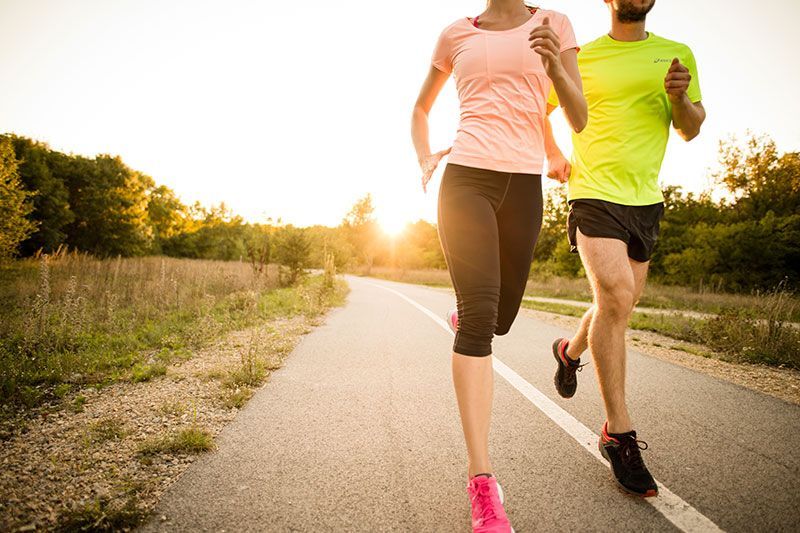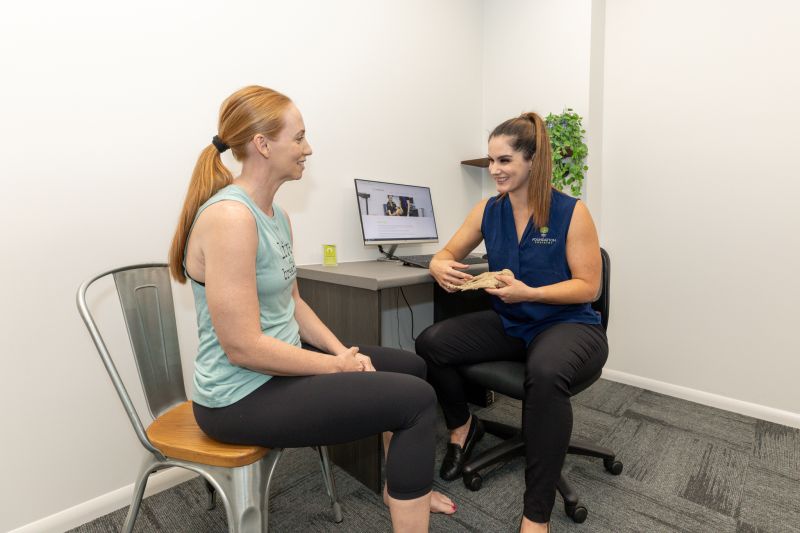More pages in this section
Running Injury Management
Recreational Running is a sport that is increasingly popular with participation growing over the last few decades. Unfortunately running is also associated with a high rate of injuries with some studies reporting 50% of runners are injured annually and 25% of runners are injured at any one time. The knee is the most frequently injured area representing 50% of all running injuries; the foot, representing 39% of all running injuries; and the lower leg representing 32% of all injuries.
The most running common injuries are:
- Patellofemoral pain syndrome, also referred to as “Runner’s Knee”, which presents as pain at the front of the knee cap either during running or during activities that increase the load on the bent knee such as jumping, squatting, lunges and going downstairs or downhill
- ITB friction syndrome (ITB – Iliotibial Band) which presents as pain on the outside of the knee during running
- Medial tibial stress syndrome (Shin Splints)
- Achilles Tendinopathy
- Plantar Fasciitis (heel pain)
- Stress fractures of the leg and foot
- Muscle strains especially of the hamstring and calf
What causes running injuries?
There are many causes of running injuries and in most cases, it is a combination of several factors that have contributed to the development of the injury. Due to the complex interaction of multiple contributing factors, running injuries can sometimes be challenging to treat; and even more challenging to prevent. Understanding which factors contribute to each running injury can help guide the best treatment.
Here are 5 of the main risk factors that affect all running related injuries:
Running Experience
Also referred to as “running history”, is often reported as the most important factor for developing a running injury. Adults new to running are at a much greater risk of injury compared with runners who have more experience with running. Generally, the risk is considered greatest for runners with less than two years of experience running. The more experience a runner has, the more “protected” they become to the high impact forces that occur with running. Gradually building experience is critical in the first two years and seeking appropriate guidance on how to “grow” your running experience is often necessary. Sports medicine professionals refer to this as load management, which refers to gradually controlling the amount of load the body can tolerate over a period of time.
Previous history of a running injury
If a runner has been injured in the previous 12 months, they are at an increased risk of sustaining a new injury or having a recurrence of their original injury. Some injuries, such as stress fractures, increase the risk of additional stress fractures over the runner’s lifetime. A runner’s previous history of running specific injuries provides important information on their susceptibility to developing a new injury. A previous history of non-running related lower limb injuries can also be an important factor to consider.
Training Errors
Most running related injuries are termed “overuse” injuries however it is more accurate to use the term “training error”. Training errors refer to a complex interaction between training frequency (number of sessions per week), training volume (total time or total distance per week) and training intensity. The number of running sessions per week, distance run or intensity of running sessions can all contribute to injury development with the runner’s experience and training history determining which of these elements contribute more, or less, at different points in time. In general terms, the more experience a runner has, the more training frequency, volume and intensity they can handle. Gradual progression in training is recommended for all runners. Novice runners are at a greater risk of injury if training more than 2-3 times per week or if performing high intensity running, where as experienced runners can sometimes train more than 7 times per week.
Biomechanics and Running Form
Biomechanics is the science of how the body is positioned, moves and responds to forces applied to it. During running, the body needs to absorb and generate large forces to move forward. The alignment of the foot, knee and hip influence the way the forces are distributed and generated with certain positions causing increased loads in joints, muscles and tendons. The position of the foot, knee and hip during the contact phase of running can therefore contribute to the risk of running injuries. For example, if the knee is extended at initial ground contact this can increase the loads through the knee which may increase pain under or around the kneecap during running. Running form refers to parameters such as cadence (steps per minute), stride length and ground contact time which can all influence the efficiency of running. In general terms, the longer the foot stays in contact with the ground, the greater force the body must absorb. Therefore, increasing the number of steps per minute (increasing cadence) will reduce the ground contact time for each foot and reduce the force applied to the body. Modifying cadence in injured runners has been associated with improvements in pain, however changing your running form should be done gradually to avoid overloading other parts of the body and developing a new injury. A running assessment can provide detailed information on your biomechanics and running form and an opportunity to improve running efficiency, reduce pain while running and possibly prevent the return of previous injuries.
Running Shoes
Can shoes prevent an injury or cause an injury and can shoes improve performance?? This is a very heavily researched and controversial topic that often generates heated discussion in online forums and amongst avid runners. Unfortunately there isn’t a simple answer for these questions. Significant money is invested in running shoe research and development and over the decades there has been a shift from enhancing cushioning, increasing stability, replicating barefoot function (minimalist shoes), enhancing heel to toe transition, increasing stack height (maximalist shoes) and improving running efficiency by increasing shoe stiffness. There is not one correct approach, or one correct shoe or one correct brand of running shoe. It is more likely that for each individual there are a range of shoes that are suitable for them, depending on the desired “feel” and fit of the shoe and a history of certain injuries that may be exacerbated by certain shoe features. For example, a person with an angry achilles tendon may find that a shoe with a low heel height may further aggravate their achilles tendon whereas a shoe with a higher heel height may provide some relief. Once the achilles tendon has rehabilitated, the lower heel height shoe may no longer be an issue.
The most important considerations that apply to everyone are that the shoe is:
- fit for purpose (a running shoe for running, not a cross-trainer or basketball shoe or leisure shoe);
- a good fit for your foot shape;
- replaced regularly (consider replacing shoes that are more than 12 months old regardless of how much they have been used); and
- if you are dramatically changing the type of running shoe, for example from maximalist to minimalist, that this is done gradually.
The research supports that if the shoe fits well and is comfortable to wear that it is likely a good choice. The research is also clear that injuries are more likely to occur if there has been a rapid change from one shoe to another where there are significant differences between the features of the shoes (for example, changing from a high heel height to a low heel height). The research is very unclear on whether a shoe alone will prevent injuries however there is strong evidence that shoes can enhance performance, but not for everyone, and not in the same way for everyone.
[feature-block]
Do you have pain when you are running? Is running no longer enjoyable? Make an appointment today with our Biomechanical Podiatrists.
[/feature-block]









